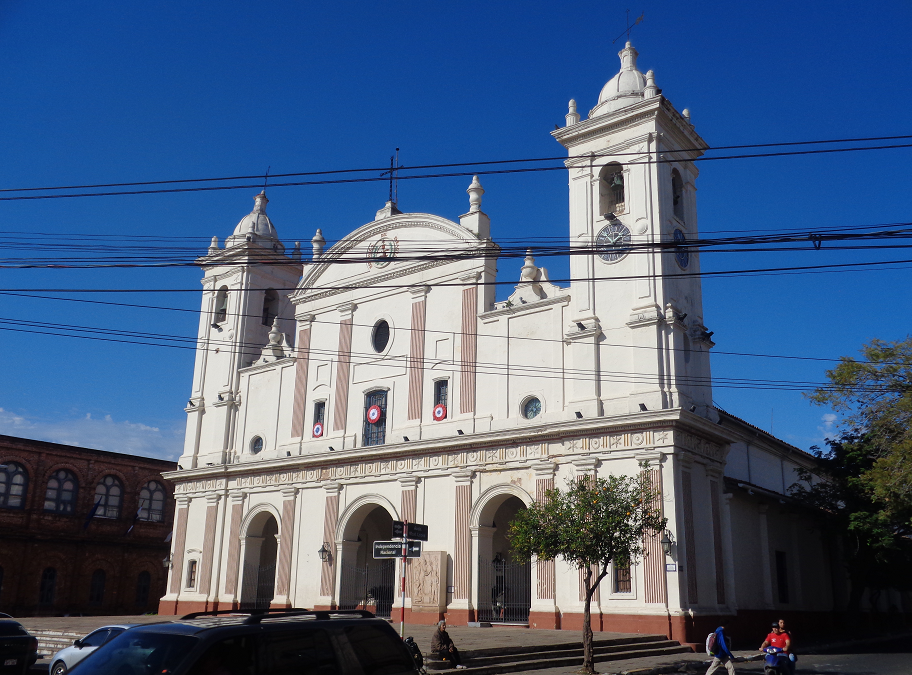Sitting on the east bank of the Rio Paraguay stands Asunción, the capital of Paraguay and by far it’s largest city. The city was founded in 1537 when a more peaceful unriver sight was saught following native attacks on the recently founded Buenos Aires.
Travelling 1000km up stream a suitable site was found in the form of a large calm bay on the Rio Paraguay. As an added bonus the natives proved far less war like than those in the vicinity of Buenos Aires and agreements were soon reached between the two peoples leading to the foundation of Asunción.
This through out the colonial period remained due it’s river connections the only settlement of any size in the area. In 1811 the newly independant status of Paraguay was declared in Asunción as it became the capital of the new state.
As cites go it is far from the largest with the historic core facing onto Asunción Bay and speading out organicly from there slowly swallowing up satellite communities as it grows.
This unplanned growth has lead to a complicated street pattern and at times badly congested traffic. Thought is being put into making the city run smoother but it can still take one and a half hours of slow moving traffic before it’s boundries are cleared.
However for a visitor to the city once the historic or micro center is reached wheeled transport can be abandoned as it is compact enough to be toured entirely on foot.
This center has a very 19th century look about it’s set piece buildings reflecting when the city was renovated in it’s current form.
A walking tour of the center takes no more than an hour or two plus time for lunch and museam visits.
An ideal place to start would be the leafy Plaza Uruguaya with it’s statue of Artigas the liberator of Uruguay. Alongside the plaza sits the old central railway station. Now housing the national transport museam.
After this leave the plaza to follow the main shopping street, Calle Palma, along which lie several souvenir shops and cafés. The street passes the National Art Museam and then reaches the large Plaza de los Héroes. Of such size is it that roads split it in four.
On one corner of the plaza sits the Panteón de los Héroes with it’s ceremonial guard which contains the remains of heros from Paraguayan history and the tomb of the unknown soldier.
Slightly further along Calle Palma but just of it is the Casa de la Independencia where the revolution of 1811 was planned and which is now kept as a museam to those events.
Continuing along Calle Palma the street becomes quieter and the shops smaller until the busy Avenida Colon is reached. This marks the edge of the city center and turning right towards the river a block of bright souvenir shops is passed before the port comes into view.
From here following the new boulevard runs along the waters of the bay taking you back towards the city center.
Turning off a short distance along this you will pass parliment, the presidencial palace, the cathedral and the old parliment, which now sits as a museam facing the Plaza de la Independencia before returning once more to the train station and the Plaza Uruguaya.
Central Asunción is always a pleasent, if occasionally rather warm place to stroll around. Never too crowded but always with plenty of street life to see.
There is of course more to Asunción than just it’s old historic center and in due course I will endeavour to bring those places also to you.



Recent Comments